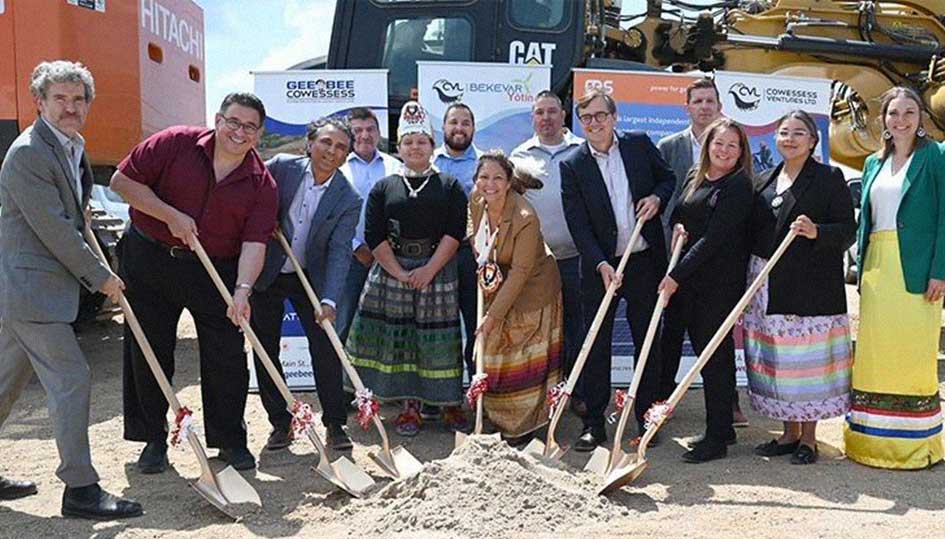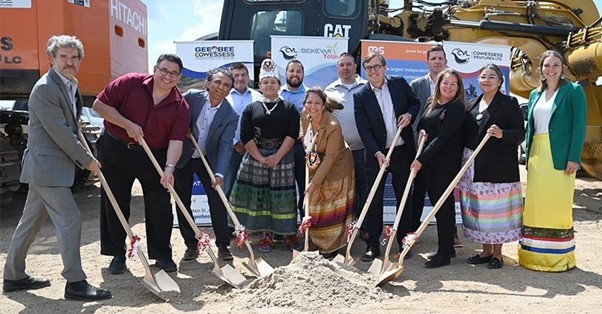Services
Technologies
Promouvoir un avenir énergétique propre grâce à des technologies renouvelables de pointe.
Voir toutes les technologiesRessources
Parcourez nos dernières ressources, notamment les mises à jour de l'entreprise, les témoignages de clients, les informations sur le secteur et les rapports de recherche.
Voir toutes les ressourcesCarrieres
Rejoignez une équipe collaborative de personnes passionnées qui s'engagent dans un travail qui a du sens.
CarrieresÀ propos de RES
Nous vivons notre mission, nous mettons en avant les personnes qui la réalisent et nous célébrons les transformations qui changent la façon dont le monde produit et consomme l'énergie.
Voir à propos de nousEmplacements et bureaux
Tout comme notre entreprise, nous sommes véritablement mondiaux – mais fièrement locaux. Trouvez les coordonnées et l’emplacement de chaque bureau RES.
Nous contacterShared ownership of renewable energy: complex but rewarding
by RES | Juil 19, 2023 | Temps de lecture: 4 min

By Gerhard Kienzler, Managing Director of RES in Germany
Germany and Denmark have a long history of shared ownership of wind farms in the form of co-operative models. However, the broader concept of shared ownership – a structure that involves a community as a meaningful financial partner in a renewable energy project – remains relatively new, both in the UK, and elsewhere in Europe.
Historically, the decision to facilitate shared ownership as part of a new renewable energy project has either been driven directly by the landowner, for example municipalities with a mandate to create greater economic benefits for the local community, or by a developer, to enhance active public participation.
With the increase in renewable energy deployment across all countries to support the decarbonisation of society, there is a desire from all stakeholders for more creative and inclusive forms of benefits. This has elevated shared ownership models to a new level of importance in recent years. In Germany, where suitable land is often a bottleneck to new development, most projects we now take forward have an element of shared ownership.
What is driving the shared ownership of renewable energy?
Aside from the obvious carbon benefits, these types of projects deliver everything from healthcare and education initiatives to town infrastructure, and art and culture programmes – projects that are not only important for the immediate future but the next generation too. Additionally, the revenue derived from shared ownership doesn’t come with the limitations sometimes applied to more traditional community benefit schemes. Moreover, projects with a form of shared ownership are typically more closely bound to the local community where they operate.
The trend for shared ownership is also being driven by government policy. In Canada for example, the participation of indigenous communities in the development and shared ownership of renewable energy projects is encouraged. Indigenous communities have access to advice and financial support to help them acquire equity shares in high value projects. This includes RES’ Bekevar wind project where the Cowessess First Nation is a significant equity participant, a construction subcontractor and a landowner in the project.

The sod-turning at Bekevar Wind Farm (July 2023) where Cowessess elders performed a traditional ceremony to wish for good luck and a safe construction period.
Although shared ownership projects can be somewhat complex to execute, with only a limited number coming to fruition, new drivers continue to emerge. This includes investors who understand that these projects can form an integral part of their ESG strategy.
Due to this shifting landscape, we can expect many more shared ownership projects in the pipeline. This has created a new niche in the market for renewable energy developers that are aligned from a values perspective but also have the technical expertise to execute these more contractually complex projects.
Breaking new ground
With no two projects, communities, or finance arrangements the same, new ground is being broken every time a project is developed, and RES is quickly building up expertise across different forms of shared ownership in its development markets. Recent projects include:
- Derril Water Solar Park, England, which was developed by RES, will be Britain’s first shared ownership solar farm. In May Ripple Energy launched its cooperative share offer, with 10% of the shares exclusively ring-fenced for purchase by the local community. Shares started from as little as £25 and several local schools have also entered the scheme. We will continue our relationship with the solar farm through an agreement with Ripple to manage the construction and operation of the project and expect to energise the site in 2024.
- Öhningen Solar Park, Germany, is expected to generate around two thirds of Öhningen’s total energy demand. The municipality will receive 90 percent of the trade tax from its operation, and residents will receive a payment of up to 0.2 cents per kilowatt hour.
LEDS (Local Electricity Discount Scheme)
Another great example of innovative local benefit is LEDS – created by RES. Over 10 years ago we listened to feedback from our communities and created a unique scheme that offers those closest to an operational wind or solar farm an annual discount on their electricity bill, regardless of their energy supplier. Those eligible include private residences, local businesses and public buildings like schools, libraries and community halls. The discount is typically applied to the eligible properties for the life of the project and gives residents a ‘stake’ in the project, without them need to take any financial risks.
There are now 24 participating projects across the UK, with over 5,000 homes benefiting from the discount in 2022 and £3m of payments being made. This scheme ensures that individuals located close to our projects can benefit directly from a renewable energy project in their area and doesn’t require a wider community body or vehicle to identify and invest in the wider priorities of a community.
LEDS is one of the many approaches, like shared ownership, that seek to provide direct and tangible benefits between renewable energy projects and the communities that host them. During the recent spike in energy costs LEDS has proven to be a particularly popular benefit for our communities and customers alike. It shows the creatively and dedication of our teams to ensure local people benefit form the projects we develop, construct and operate.
Although questions remain around how to simplify shared ownership while balancing the needs of all stakeholders, the direction of travel is clear. We will see many more renewable projects with a community element come forward in the next few years.
